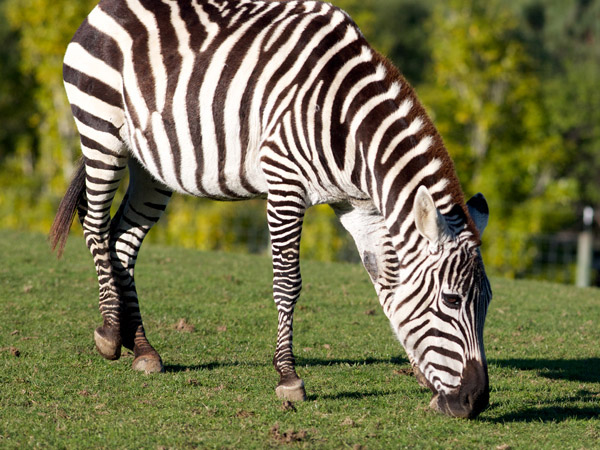Zebra
Equus burchellii

Distribution:
Eastern and Southern Africa
Habitat:
Grasslands, plains, savannah woodlands.
Diet:
Grasses, vegetation, leaves and young trees.
Gestation:
395 days, one foal born
Longevity:
18 -20 years in the wild, 25 - 30 years in captivity.
Predators:
Lions, hyenas, humans
Conservation Status:
Least concern
General:
The Plains zebras are well-known African mammals, exhibiting characteristic black and white stripes all over their body. Their closest relatives are donkeys and horses. The sparkling coat of this species reflects more than 70% of incoming heat.
Zebras communicate with each other in high pitched barks and whinnies. As well as barking or snorting when they see a predator.
Like most members of the horse family, zebras are highly social. Plains zebras live in groups, known as 'harems', consisting of one stallion with up to six mares and their foals. Bachelor males either live alone or with groups of other bachelors until they are old enough to challenge a breeding stallion.
Fun fact: Zebra foals have soft, fuzzy fur, and their stripes are usually brown and white at first. Their legs are already almost as long as an adult zebra's and they can walk just 20 minutes after being born!
At Hamilton Zoo:
You'll find our zebra harem in the savannah. Marbles is a Grant's Zebra, while the others are all Plains Zebra.
